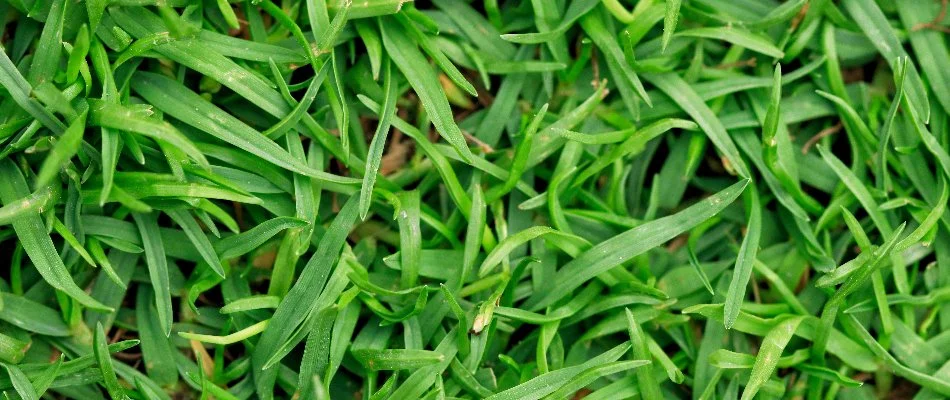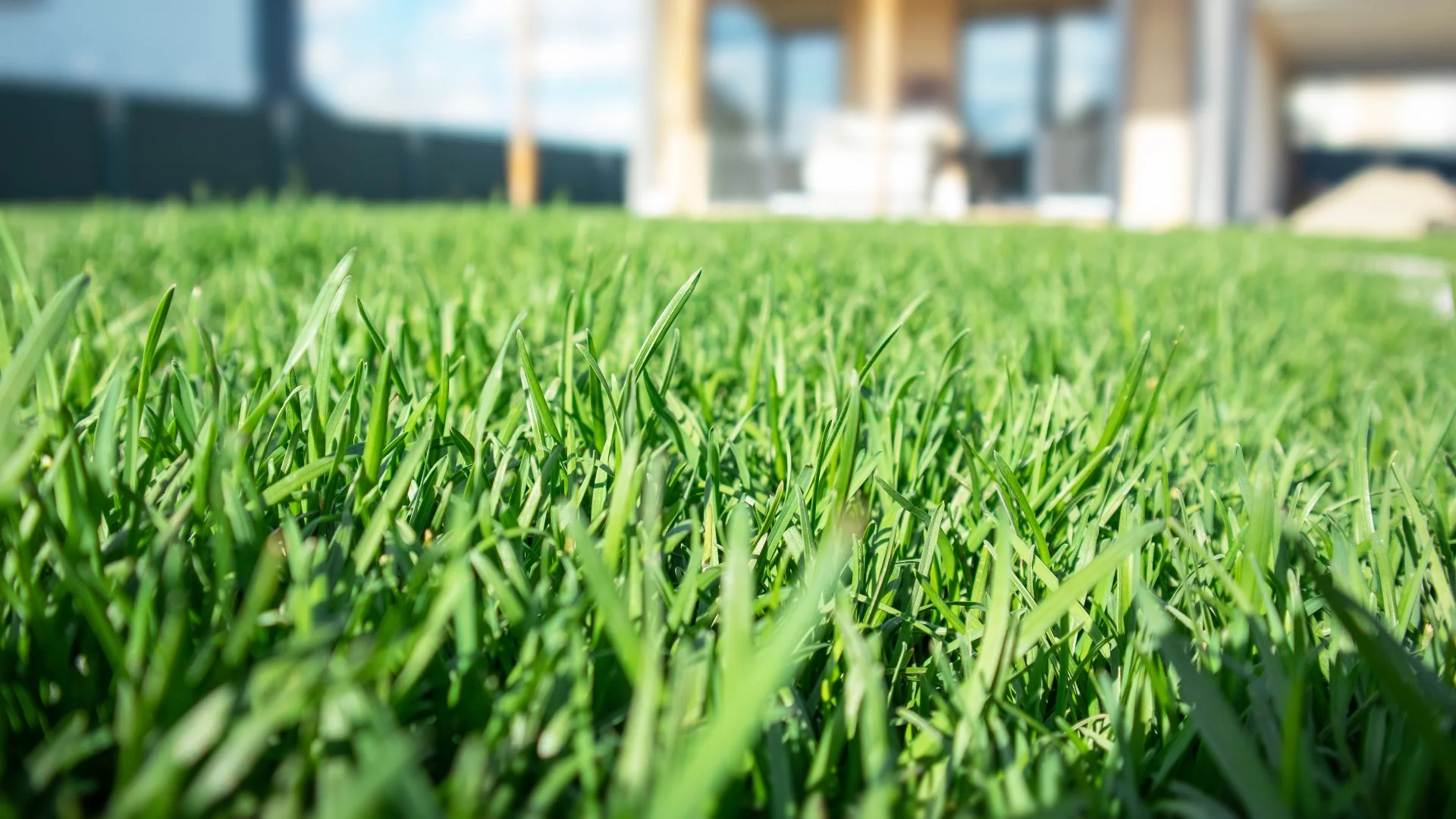Mowing your lawn before applying spring fertilizer is crucial for several reasons. Firstly, it helps the fertilizer to reach and penetrate the soil more easily, as there may be overgrowth and debris from winter on top of it. Additionally, mowing a few days before applying fertilizer reduces the risk of stressing out your grass, which can occur if you apply too many treatments at once or overstimulate it. However, make sure that you wait to mow or fertilize until your lawn has resumed growing and has started to green up. In Texas, this typically happens around February or March.
Mowing your lawn will give the spring fertilizer good contact with the soil.

The goal when fertilizing your lawn is to have the treatment provide all the nutrients it needs to thrive. However, this doesn't happen if the fertilizer doesn't have good contact with the soil; that's where mowing comes into play. After the winter season, your lawn will likely have some overgrowth and debris across it. Because of this, the spring fertilizer may not reach the ground or absorb properly, resulting in wasted product. Mowing beforehand makes the grass blades short enough for the fertilizer to get in direct contact with the soil and gives it the best chance of being effective.
Before mowing your lawn, make sure that your mower blades are sharp enough to cut cleanly rather than tearing your grass.
Avoid fertilizing right away after mowing your lawn in the spring.
When it comes to tending to your lawn in the spring, it's generally recommended to mow it before applying fertilizer. However, it's important to avoid fertilizing right after mowing. It's best to wait for about 24 hours to a few days after mowing before giving your lawn its first round of spring fertilizer. This waiting period is crucial because when you mow your lawn, it not only has just come out of dormancy, but it has also received a fresh cut, which can stress the grass. By applying fertilizer too soon after mowing, you risk additional stress to your turf, potentially causing damage. It's important to allow your lawn some time to recover from the mowing process before introducing fertilizer to promote healthy growth.
Make sure your lawn is starting to green up again before mowing and fertilizing in the spring.
Fertilizing or mowing your lawn before it starts to green up and grow again in the spring can potentially harm it by causing unnecessary stress. During spring, your lawn is in the process of coming back to life and transitioning out of dormancy. Mowing too soon in the spring can put stress on your turf and potentially lead to damage. Similarly, applying fertilizer too early, before the soil has had a chance to warm up and the grass actively starts growing, means it won't be able to absorb the nutrients from the treatment and can lead to fertilizer burn. It's essential to observe your lawn and ensure that it is in the active growth phase before mowing and fertilizing in the spring.
Call us today to sign up for our lawn fertilization service!
Your lawn's appearance is important and deserves proper care. Our team at Dr. Tex Lawn & Pest offers a comprehensive lawn fertilization program that includes 8 visits per year. This program provides the nutrients necessary for your lawn's successful growth, with visits scheduled from January to November. In addition to fertilization, we also provide weed, disease, and insect control services. Our holistic approach to lawn care will keep your turf consistently in the best shape possible, allowing you to achieve this without the hassle of spending hours outside yourself.
We serve residential and commercial properties and HOAs in Austin, TX, and surrounding areas like Round Rock, Cedar Park, and Pflugerville. Give us a call at (512) 717-5071 to sign up for our lawn fertilization service today!



Comments (0)
Thanks for your comment!
Thanks for your feedback! Your comments have been successfully submitted! Please note, all comments require admin approval prior to display.
Error submitting comment!
There is a problem with your comment, please see below and try again.